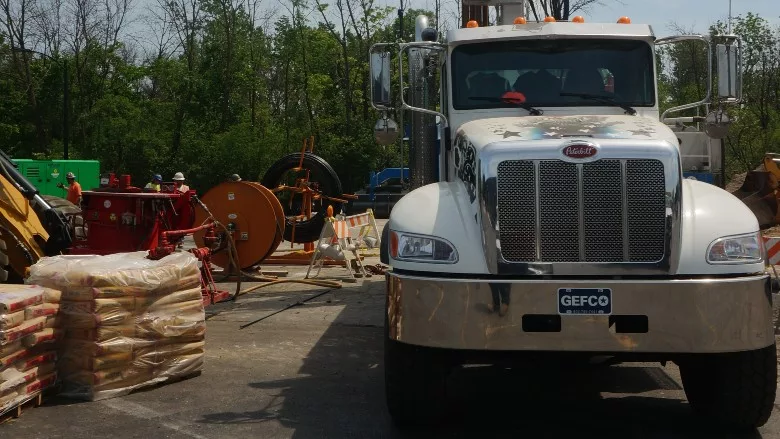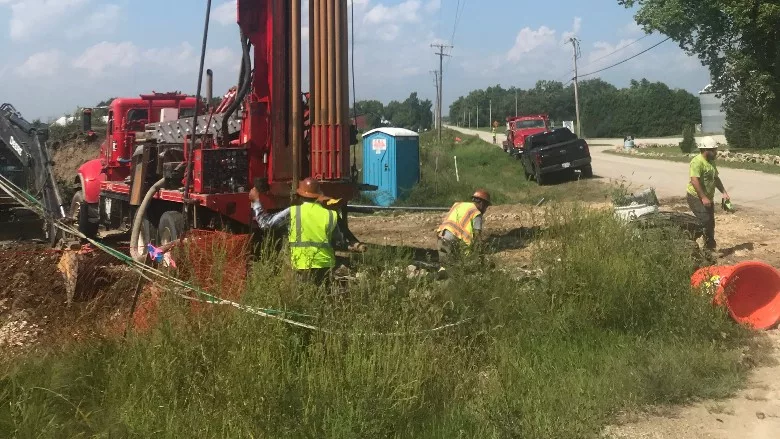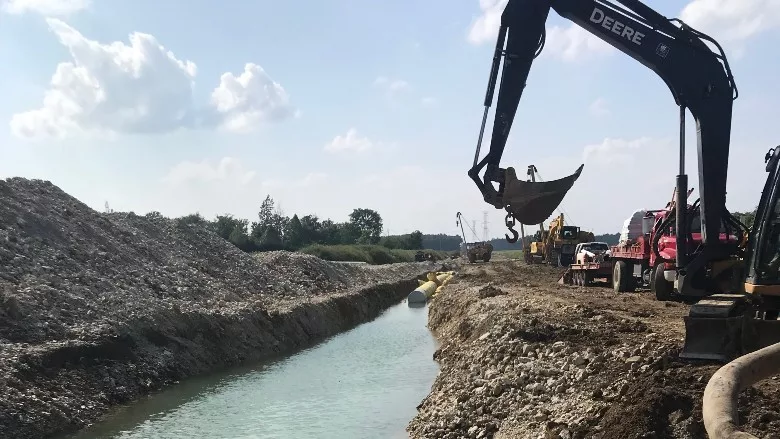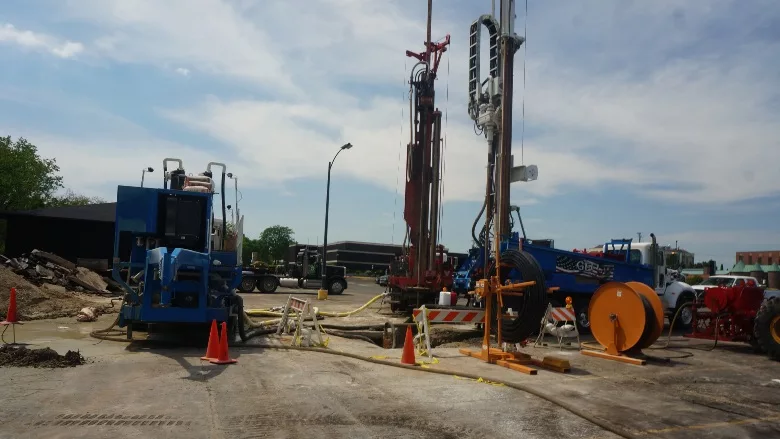How Do You Capitalize a Drilling Company?
As Federal Funds Flow to Drill Projects, Go Far Together

Whether you scale up for geothermal, cathodic or another type of work, you probably need a capital partner.
Source: Brock Yordy

An investor can help a company get properly equipped for bidding projects funded by recent federal investments.
Source: Brock Yordy

The Infrastructure Investment and Jobs Act creates opportunities for drilling companies to plug into all kinds of much-needed infrastructure projects.
Source: Brock Yordy

Incentives in states like New York also make training and gearing up in geothermal a good move if contractors can find the capital.
Source: Brock Yordy
The world population hit 8 billion people on Nov. 15, 2022. We, as an industry, are starting behind the eight ball. We need as many productive water wells as the groundwater management agency will allow in the West. New York would like to drill 6 to 8 million residential geothermal wells in the east to hit the state’s net zero goals. Beyond water and geothermal drilling, our industry requires drillers for mining, geotechnical, construction, and other industrial applications.
The infusion of money from the federal Inflation Reduction Act and Infrastructure Investment and Jobs Act has created many new opportunities for drilling companies to scale and diversify. The question becomes where to get the money. From a bank? Join forces with investors? Sell and become part of a larger company? All options have different impacts on the future of a family business. The goal is to avoid that massive equipment auction fade-away.
In my two-plus decades working outside my family’s small drilling company in western Michigan, I have experienced all three options. In 2018 after working for GEFCO, I wanted to return to the family business. I created a business plan to diversify into cathodic protection wells in the Great Lakes region. I sat down with my small-town bank and discussed options for collateral and loans. The stakes were high for my family and myself. My father was 70 years old; his employees were also beyond retirement. At the time, my wife and I had a 2-year-old and another baby on the way, so we considered good health insurance crucial.
Ultimately, I chickened out. I weighed my options for multiple million-dollar loans, recruiting reliable employees and establishing sales in a new market. It wasn’t the right decision for my family. But then I got lucky. Another drilling company looking to scale hired me to diversify their business into cathodic. We used my business model, which was so successful it made a large construction company wonder, “Why take on the risk of drilling?” A few years later, they would sell most of their rigs in favor of utilizing subcontractors.
Scaling a drilling business (or any business, really) requires the right equipment, people and capital. The first question for drilling contractors to consider: What rig, tools and equipment does success require? Yes, I heard you shout your favorite saying, “It depends, Brock.” You are correct. Depending on geological formations, total depth, hole diameter and depth to water, rig requirements change to maintain effective penetration rates in different regions. Plus, beyond the fundamentals of drilling, you have other considerations for the location of work. Think inner-city drilling or mobilizing in remote right-of-way locations in the middle of a corn field. Finally, the cost of operation is critical to fuel consumption, ease of use, noise mitigation and safety through automation.
I have spent my career volunteering for complicated projects in remote areas to understand better why we choose a specific rig over another. At the core, every rig choice came down to reliability, speed, ease of use and budget. While working in the Atacama Desert, the chosen rig focused on reliability and ease of usefulness. Crews had to have reliable core recovery. On cathodic protection jobs, I wanted a rig and equipment that could work in both urban and extremely remote environments. The rig had to be capable of quick mobilization on and offsite, along with having the capacity to drill various geological conditions.
Have a Business Ready for Investors
These options, for a seasoned driller or company owner, seem logical — at least when it comes to the actual work. However, the most significant factor in drilling packages often comes down to capital investment. Is the return on investment (ROI) worth the upfront cost to build the most capable drilling program for continued success? I think the better question is, what is the price of trying to do it right a second time? Will there be a second time?
Working with investors who want to join the drilling industry can have great value when our drilling knowledge aligns with their expertise. They enter the market with the capital (generated outside of drilling) that we need to scale. It’s like making a friend in the casino who won a lot of money playing Texas hold’em, then asking them to join you at the roulette table. Gambling a bit is OK, but ineffective at amassing capital to invest.
Drillers and new investors should learn from each other by sharing their expertise and tribal knowledge, and openly discussing known risks.
With investment in your company, the goal becomes to minimize risk by utilizing cost-cutting measures like lean operations to increase productivity. Investors take a simple approach to decision-making for equipment purchases: Which one maximizes the return on investment? Obviously, we all want to boost ROI and build a long-lasting business. The friction here comes from the level of unknown risk, or gambling, if you will, that occurs naturally in drilling. Drillers and new investors should learn from each other by sharing their expertise and tribal knowledge, and openly discussing known risks.
Known Risks Offer Opportunities
How do we minimize risk while discovering the unknown? For that large company, minimizing drilling risk meant subcontracting the work. They had a fixed cost and no worries about the ROI of equipment. That is an advantage for a competent drilling company with the right tools and equipment if it is adequately bid. In drilling, we can’t eliminate all risks; the goal is to minimize unknown risks. Known risk should be viewed as an opportunity to make money. The first thing I do when seeking out project risks is to look at the location. The only major unknown should be the subsurface geologic conditions, and often other boring logs describe many of those conditions, making them known risks. The following things shouldn’t be unknown but often get categorized and destroy profit and equipment utilization. Site access and maintenance expectations by the city, neighbors, or property owners. Should the site be matted for your operation or to minimize the impact on property restoration? Manmade subsurface obstructions such as utilities, old structures, and buried trash will significantly impact revenue and productivity. Another significant impact comes from poor engineered specifications causing downtime. Project management and time to completion should not be unknown; if it is, then it is a time and material job. Finally, understand the limitations of your equipment and people. Sometimes the best way to stay profitable is to not bid on the high-risk project. If you are the subcontractor taking on all the risk, you should be paid adequately.
To be successful and scale a company, we must be able to forecast equipment utilization and growth effectively. We must use our tribal knowledge with past experiences in collaboration with the partnership of investors. Scaling is about aligning expectations. Next month I will continue this series by creating the ideal partnership with an investor or organization.
Looking for a reprint of this article?
From high-res PDFs to custom plaques, order your copy today!



